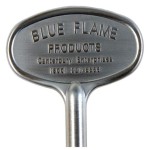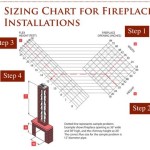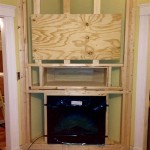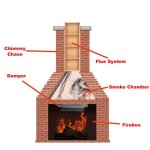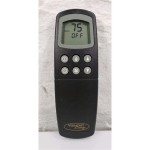TV Wall Mount Installation Over Fireplace: A Comprehensive Guide
Mounting a television above a fireplace has become an increasingly popular design choice, offering a space-saving solution and creating a focal point in a living room. However, this installation presents unique challenges that require careful planning and execution. This article provides a comprehensive guide to installing a TV wall mount above a fireplace, addressing crucial considerations and outlining best practices for a safe and aesthetically pleasing result.
The appeal of mounting a TV above a fireplace stems from several factors. It consolidates entertainment and warmth in a single area, maximizing space, especially in smaller rooms. Furthermore, it often eliminates the need for a separate entertainment center, contributing to a cleaner, more minimalist aesthetic. When executed correctly, it creates a visually appealing arrangement that draws the eye and elevates the overall ambiance of the room.
Despite its advantages, this type of installation requires thorough assessment and meticulous execution to mitigate potential risks and ensure long-term reliability. Factors like heat exposure, wall structure, and cable management must be carefully considered to avoid damage to the television and ensure a safe and functional setup.
Key Point 1: Assessing Feasibility and Addressing Concerns
Before commencing the installation, a thorough assessment of the fireplace and surrounding wall is crucial. This involves evaluating the type of fireplace, the wall's construction, and the potential impact of heat on the television. Ignoring these factors can lead to significant problems in the future.
The most significant concern is the potential for heat damage. Televisions are sensitive electronic devices that are not designed to withstand prolonged exposure to high temperatures. The heat rising from a fireplace can degrade the television's components over time, shortening its lifespan and potentially causing malfunctions. The intensity of the heat depends on the type of fireplace. Gas fireplaces typically produce less heat than wood-burning fireplaces. Electric fireplaces, while still generating heat, often have adjustable temperature settings, mitigating the risk somewhat.
To mitigate heat exposure, several strategies can be employed. Installing a mantel can deflect heat away from the television. The depth of the mantel will determine its effectiveness; a deeper mantel provides greater protection. Furthermore, a heat deflector can be installed above the fireplace opening to redirect heat away from the wall. The distance between the top of the fireplace and the bottom of the television is also crucial. A greater distance allows for better heat dissipation. A minimum of 12 inches is generally recommended, but this may need to be increased depending on the fireplace's heat output.
The wall's construction also plays a critical role in the feasibility of the installation. Most fireplaces are surrounded by a masonry wall, such as brick or stone. Mounting a TV to a masonry wall requires specialized anchors and drilling techniques. It's essential to use anchors rated for the weight of the television to ensure a secure and stable mount. If the wall is a standard drywall construction, locating the studs behind the drywall is paramount. The television mount must be securely attached to the studs to prevent it from pulling away from the wall. Using a stud finder is essential for accurately locating the studs.
Another consideration is the presence of a chimney. Older homes may have a chimney that runs directly behind the wall, which can hinder the installation process. It's important to inspect the wall cavity to ensure that there are no obstructions that could prevent the television mount from being installed properly.
Key Point 2: Selecting the Right Mounting Hardware and Tools
Choosing the appropriate mounting hardware is essential for ensuring a safe and secure installation. Several types of TV wall mounts are available, each designed for different television sizes, weights, and viewing angles. Selecting the right mount depends on the specific requirements of the installation.
Fixed mounts are the simplest and most affordable option. They hold the television flush against the wall, providing a low-profile look. However, fixed mounts offer limited adjustability, meaning the viewing angle cannot be changed once the television is mounted. Tilting mounts allow the television to be tilted up or down, reducing glare and improving the viewing angle from different positions in the room. This option is beneficial if the television is mounted relatively high above the fireplace. Full-motion mounts, also known as articulating mounts, offer the greatest flexibility. They allow the television to be swiveled, tilted, and extended away from the wall, providing optimal viewing angles from anywhere in the room. Full-motion mounts are more expensive than fixed or tilting mounts, but they offer unparalleled versatility. Regardless of the type of mount chosen, it's crucial to select one that is rated for the weight of the television. Exceeding the weight limit of the mount can lead to damage or even collapse.
In addition to the TV mount, specialized hardware is needed for masonry walls. Concrete anchors or sleeve anchors are designed to provide a secure hold in brick, stone, or concrete. These anchors are typically installed by drilling a hole into the masonry and inserting the anchor. The television mount is then attached to the anchor using screws or bolts. It's essential to use the correct size drill bit for the anchors to ensure a tight and secure fit.
The following tools are essential for a successful television mount installation: a stud finder (for drywall walls), a level, a drill, drill bits (including masonry drill bits for brick or stone), a screwdriver, a socket wrench, a measuring tape, a pencil, and safety glasses. A wire fish is also helpful for running cables through the wall. Furthermore, a voltage tester should be used to ensure that there are no electrical wires in the wall before drilling.
Key Point 3: Executing the Installation Safely and Effectively
Once the feasibility has been assessed and the necessary hardware and tools have been gathered, the installation process can begin. Safety should be the top priority throughout the entire process. Disconnecting the power to the area before drilling is crucial to avoid electrical shock. Wearing safety glasses is also essential to protect the eyes from debris.
The first step is to locate the studs (for drywall walls) or mark the desired mounting location on the masonry wall. Use a stud finder to accurately locate the studs behind the drywall. Mark the location of each stud with a pencil. If mounting to a masonry wall, use a level to ensure that the mounting location is straight and mark the desired location with a pencil.
Next, attach the mounting bracket to the wall. For drywall walls, align the mounting bracket with the marked stud locations and drill pilot holes through the bracket and into the studs. Secure the bracket to the studs using lag bolts or screws. For masonry walls, drill holes into the masonry at the marked locations. Insert the concrete anchors or sleeve anchors into the holes. Align the mounting bracket with the anchors and secure it using screws or bolts.
Once the mounting bracket is securely attached to the wall, attach the television to the mounting arms. Most televisions have VESA (Video Electronics Standards Association) mounting holes on the back. Align the mounting arms with the VESA holes and secure them using screws. Be sure to use the correct size screws to avoid damaging the television.
Careful cable management is essential for a clean and organized installation. Concealing the cables behind the wall is the ideal solution. This requires drilling a hole in the wall behind the television and another hole near the floor or behind an existing outlet. Run the cables through the holes using a wire fish. Connect the cables to the television and any other devices, such as a cable box or DVD player. Cable management kits are available that include cable concealers and other accessories to help organize the cables. Ensure that all cables are properly secured to prevent them from becoming tangled or damaged. Excess cable slack should be neatly coiled and tied off.
Once the television is mounted and the cables are connected, test the installation to ensure that everything is working properly. Turn on the television and check the picture and sound quality. Verify that the television is securely mounted and that there is no wobble or movement. If necessary, adjust the television's position or viewing angle to achieve the desired result.
Finally, clean up the work area and dispose of any debris properly. Carefully inspect the installation to ensure that there are no loose screws, exposed wires, or other potential hazards.
By carefully considering these factors and following these guidelines, installers can successfully mount a television above a fireplace, creating a stylish and functional entertainment space while ensuring the safety and longevity of the equipment.

Can I Mount My Tv Above The Fireplace

Can I Mount My Tv Above The Fireplace

Is It Safe To Mount Your Tv Above The Fireplace Chimney And Wildlife

Tv Wall Mount Installation With Wire Concealment Over Fireplace

The Ultimate Guide To Mounting Your Tv Over Fireplace 4 Easy Steps Patriot Chimney

Safely Mount A Tv Above An Electric Fireplace Touchstone Home S Inc

How To Mount A Tv Over Fireplace Vertical Chimney Care

Tv Mounting Gallery Integrated Tech Solutions

Ortal S Innovative Technology Makes It Safe To Mount A Tv Above Your Fireplace

How To Mount An Electric Fireplace With A Tv Fireplaces Direct Learning Center

